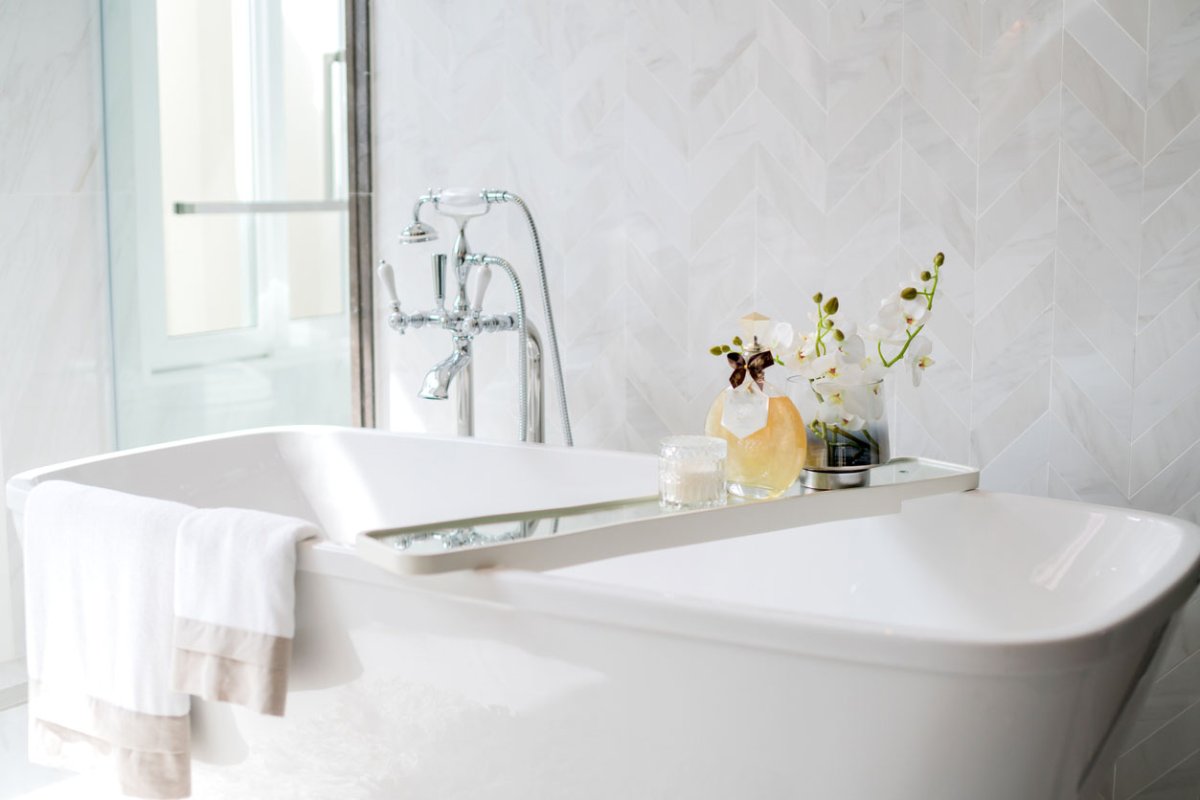We may earn revenue from the products available on this page and participate in affiliate programs. Learn More ›
- Typical Range: $1,390 to $10,734
- National Average: $5,660
Are you considering a fresh look and feel for your bathroom? A dated bathtub can make a whole bathroom feel dreary and drab, so replacing it is often at the top of the list when it comes to bathroom remodels. The typical cost range to replace a tub is $1,390 to $10,734, and the national average is $5,660. Still, your actual cost will depend on the type of bathtub selected, whether plumbing adjustments will be necessary, and the going rate of labor.
Ahead, learn about all the factors involved in replacing a bathtub and discover ways you can find the right contractor and save money on the project.
Factors in Calculating How Much It Costs to Replace a Bathtub
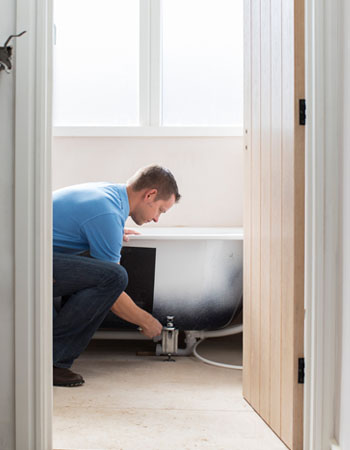
While the average national cost to replace a bathtub is $5,660, it can run as little as $750 or as much as $20,000. The wide cost fluctuation is mainly the result of the type of bathtub chosen. Other factors apply as well, so consider the following when estimating the cost of a bathtub replacement project.
Old Tub Removal
On average, it costs $50 to $100 to remove an old tub and get it out of the house. However, it could run more if the old tub is made from cast iron, in which case the contractor may need to break it with a sledgehammer and then haul out the pieces. Bathtubs are often installed before doorways are framed and trimmed during the construction process, so removing an old bathtub in one piece may not be possible.
Material Disposal
Trash pickup in most municipalities only covers household waste, so don’t plan on putting the old bathtub and any other demolition materials by the curb and expect them to be hauled away. Special provisions must be made to dispose of construction and demolition (C&D) materials, and the cost could add anywhere from $100 to $4,200 to the project’s cost.
Surface Preparation
In some cases, the contractor may be able to position the new tub in the spot occupied by the old tub without making adjustments, but that’s not always the way it works. Often, subfloor repairs are necessary, especially if the old tub leaked and caused water damage. Also, if a heavier tub is being installed, the flooring may require additional reinforcement. These repairs and alterations could add $300 to $800 to the price.
New Bathtub Style, Size, Configuration, and Material
The style of bathtub selected plays a significant role in the cost of the project. Depending on its size, the material it’s made from, and its configuration, the price of a new tub ranges from a budget-friendly $200 to as much as $14,000. At the high end, you’ll find specialty tubs, such as jetted and air bath models.
Surround
A one-piece bathtub/surround unit is usually too large to fit through standard interior door openings. The solution is to install a bathtub surround made from preformed panels or have tile custom installed around the tub. Depending on the materials and method chosen, the tub surround will add $500 to $2,000 to the project’s cost.
New Faucets
It’s pretty much a given that along with a new bathtub, new faucets will be necessary. Faucets come in a wide range of styles and materials. Inexpensive chrome models that start around $50. It costs up to $900 for high-end copper-and-porcelain faucets or special-effects faucets like waterfalls faucets.
Plumbing
During a bathroom remodel, the homeowner may want to change the configuration of the fixtures. If so, the plumbing lines must also be relocated. This can add anywhere from $400 to $1,900 to the final tally, depending on the extent of the work that needs to be done. In most cases, a plumber will need to do the work.
Labor, Materials, and Permits
The going cost of labor varies from community to community, and for an entire bathtub replacement project, it averages about $100 to $2,000, depending on the materials the tub is made from. For example, a cultured marble tub is much heavier than a standard tub, so labor will understandably be higher. The local building authority might also require a permit if the plumbing or wiring configuration is altered.
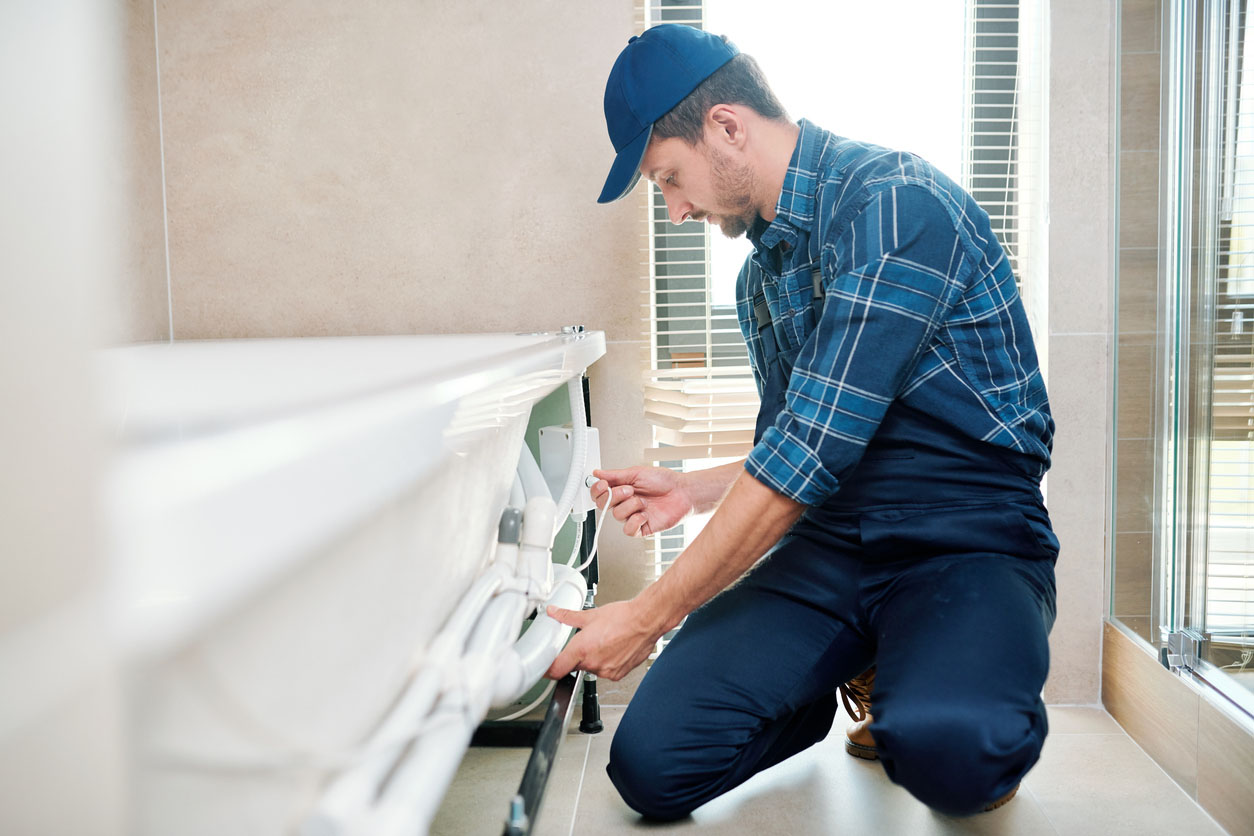
Additional Costs and Considerations
Other factors may affect the final cost, depending on whether additional fixtures or cabinetry must be replaced. Costs also increase if a homeowner opts for specialty services or items. Keep the following considerations in mind when calculating the estimated cost of your project because they could add to the price tag.
Water Heater Replacement
It’s not always necessary to replace the water heater during a bathtub replacement project. Still, if a larger tub is being installed with the intention of holding a greater quantity of water, a larger-capacity water heater may also be needed to provide enough hot bathwater. In this case, expect to pay $800 to $1,600 to replace the water heater with a new model.
Electrical Panel Upgrade
It isn’t always apparent why wiring or an electrical panel may need upgrading for a bathtub replacement. However, if a jetted tub (similar to a hot tub) is being installed, a new electrical circuit may be required. In addition, an electrical circuit that supplies power to a jetted tub must include a ground fault circuit interrupter (GFCI) to prevent electrical shock. Updating wiring or the electrical panel could add $530 to $1,962 to the project.
Replacing Plumbing
Old water supply lines and outdated or leaking drainpipes should be replaced at the time a new bathtub is being installed. Since the pipes are accessible at this time, it’s the least expensive time to make the updates. Replacing plumbing will run an average of $400 to $1,900, depending on the extent of the pipes and lines needing replacement.
Shower to Tub Conversion
Converting a shower to a bathtub typically ranges from around $1,900 to $10,400, with the cost of the tub itself being one of the most significant factors. Since the footprint of a shower is typically smaller than the footprint of a bathtub, wall removal may be necessary to expand the space. If this is required, expect to pay $10,000 to $15,000, or more, depending on the extent of the changes.
Bath Fitter
If replacing the bathtub with a new one is out of the question due to budget concerns or space considerations, some may opt to have the existing tub covered with a flexible but permanent acrylic liner that turns the old bathtub into a whole new tub. Called a bath fitter, this renovation project costs about $1,400 or more, depending on the size of the original tub.
Floor Reinforcements
Large-capacity bathtubs and jetted tubs often require a sturdier floor than an older tub needed. If reinforcing the floor system is necessary to hold the extra weight, expect to pay an average of $300 to $800. The cost depends on how easy (or difficult) it is to access the joists, as well as the joist size.

How Much Does It Cost to Replace a Bathtub? Types of Tubs
The type of bathtub selected is a significant factor in the overall cost of the project. While bathtub replacement costs range from $1,435 to $7,246, the individual cost will be impacted by the type of tub you select. A good selection of bathtubs is available in a wide price range.
General Purpose Tub
Most are familiar with a general-purpose bathtub that’s relatively shallow—about 14 inches deep or less—and is often made from budget-friendly acrylic. Many general-purpose tubs are tub/shower combos and cost an average of $200 to $800. They’re good options for children’s bathrooms but may not provide enough bathing room for most adults.
Jet and Whirlpool Tubs
Jetted tubs are definite upgrades, and they are high on the wish list for master bathrooms. Replacing a smaller tub with a jetted tub may require expanding the square foot floor space and require additional wiring to run the jet feature. Installing a jetted tub averages $1,500 to $17,000, with $6,500 being a typical cost.
Soaking Tub
Some refer to general-purpose tubs as soaking tubs, but characteristically a soaking tub is a bit deeper and larger to provide more bathing space. A typical soaking tub averages about $1,000 but can range in price from $600 at the lower end to $13,000 at the high end. The type of tub factors considerably in the price fluctuation.
Walk-In Tub
Considered a specialty bathtub, a walk-in tub is often used in homes where residents are elderly or mobility-challenged because it offers a safer bathing experience. Walk-in tubs feature a door that opens and allows the bather to step over a low-profile curb to get in. The tubs also come with seats, making it easier for those who have difficulty getting in and out of a regular tub to bathe. Expect to pay $2,000 to $8,000 for a walk-in tub.
Freestanding Tub
Freestanding tubs typically require ample space because they’re not framed in with a surround. They’re well suited for positioning in the middle of a large bathroom or in a spacious nook in front of a window with a view. A freestanding tub will run from $750 to $12,000, depending on the style and materials it’s made from. The average cost of a freestanding tub is around $2,500.
Clawfoot Tub
Once considered the standard in the late 1800s to the mid-1900s, the clawfoot tub fell out of grace due to its heavy cast-iron body, but the style has made a resurgence. Today’s clawfoot tubs are especially well suited in homes with classic or traditional decor. They’re freestanding, and they’re made from lighter-weight materials, such as acrylic. Expect to pay from $600 to $10,000.
Air Bath Tub
Similar to a jetted tub, an air bath tub creates a massaging sensation. The difference is that in a jetted tub, a pump is used to circulate the water in the tub, while an air bath tub emits jets of warm air that circulate the water and create soothing bubbles. Air bath tubs range from about $1,500 to $10,000, depending on size and style.
Do I Need To Replace My Bathtub?
Bathroom remodeling can be a pricey prospect, and replacing a bathtub can cost anywhere from $1,390 to $10,734 on average, with the least expensive replacements starting around $200 and topping out at approximately $14,000. Many want to replace the bathtub to create a fresh and updated look, but there are additional reasons to consider this project.
Leaks
Most of the time, it’s not a bathtub itself that leaks, but rather the plumbing connections beneath the tub. Signs of leaks include water pooling on the floor near the tub or water stains on the ceiling below (if it’s a second-story tub). If the old bathtub has to be removed to fix the plumbing, consider replacing it at the same time. The national average for bathtub replacement is about $5,660.
Cracks
Dropping a heavy object can crack a tub, and while surface cracks may not necessitate replacing the entire tub, they’re unsightly and can make the whole bathroom look old and neglected. If the rest of the tub is in good shape, having it refinished with the installation of an acrylic liner, which starts around $1,800, might be a solution.
Stains
Most types of stains can be removed from enameled tubs, although it can require a lot of elbow grease to get them off. However, acrylic tubs are a different matter because harsh scrubbing agents can dull the finish of the tub and lead to more staining. If the stains don’t come off, it may be time to consider bathtub replacement.
Mold and Mildew
Mold and mildew aren’t usually a problem in the bathing portion of a tub, but they can be a significant factor if they’re growing in the space beneath a tub or in the wall behind a tub. In this case, bathtub replacement is indicated. Additional fees for preparing the wall or floor surface at the cost of $300 to $800 or installing a new surround, which averages $500 to $1,000, might apply.
Difficulty Using the Existing Tub
For those who are mobility-challenged, getting in and out of a standard bathtub is not only inconvenient, it can be downright dangerous. When this is the case, a walk-in bathtub might provide a solution. The average cost range to install a walk-in tub is $2,000 to $8,000, depending on size, materials, and added functions, such as jets.
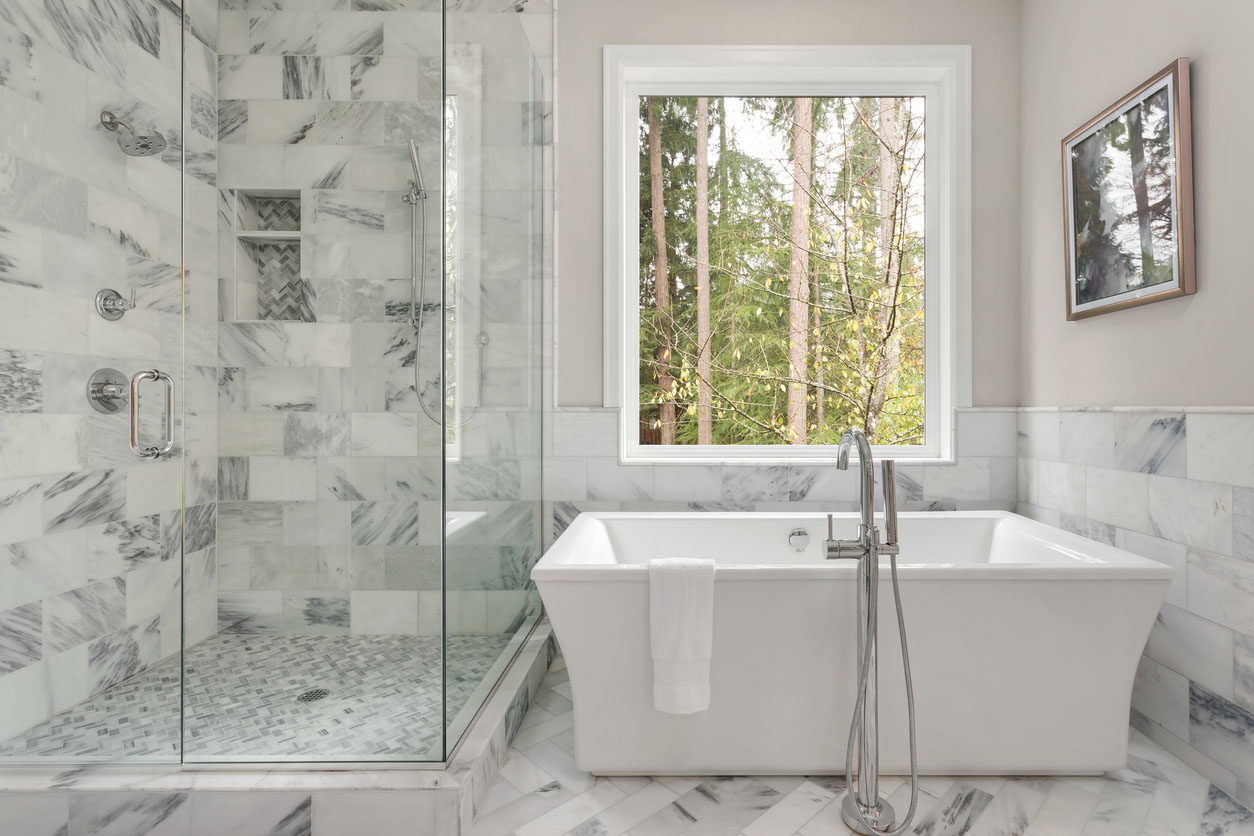
Benefits of Replacing a Bathtub
Bathtub replacement is often just one part of a larger bathroom remodel, but as the most prominent fixture in most bathrooms, it’s the most important to get right. The benefits realized by replacing the tub will vary by the homeowner, and more than one reason may apply.
Aesthetics
Perhaps the biggest reason for replacing a bathtub is to give the bathroom a fresh, updated look. Nothing dates a bathroom more than having a shallow, avocado-colored bathtub that screams 1970. The cost to install a new tub varies with the look you’re after. An inexpensive fiberglass tub may cost as little as $200, while a cultured marble tub can run $2,000, and a new cast-iron tub can cost as much as $14,000.
Comfort and Convenience
For many, bathing is more than just getting clean—it’s a time for relaxing, meditating, or enjoying the soothing warmth of the water. If the tub isn’t comfortable, though, the bathing experience isn’t as enjoyable. Some tubs are explicitly designed for comfort, such as jetted tubs with an average price of $6,500 and walk-in tubs that will set you back an average of $5,000.
Excessive Repairs
Repairing an existing tub or its plumbing can be an option to full bathtub replacement, but if you find you’re frequently hiring a plumber to come out and fix leaks or replace faucets, it might be time for a new tub altogether. On average, it runs between $1,390 to $10,734 to have a bathtub replaced, but the price will vary depending on the tub chosen and any additional repairs that are necessary.
How Much Does It Cost to Replace a Bathtub? DIY vs. Hiring a Professional
Replacing a bathtub is usually a job reserved for the pros. Some general contractors have plumbers on the crew—or they coordinate with plumbing subcontractors. They can arrange the entire installation and remodeling process. In addition to setting the tub and performing any necessary floor prep, a general contractor can make arrangements to have a bathtub surround tiled.
Keep in mind that complying with the rules in many communities requires hiring a professional plumber, so before tackling that part of the project, call your local building authority to see who’s permitted to do the work. If the plumbing needs to be relocated or leaks repaired, it could add anywhere from $150 to $1,900.
Adding a jetted tub or an air bath almost certainly requires the services of a licensed electrician since most communities frown on homeowners doing their own electrical wiring.
That said, a knowledgeable DIYer who has the ability to set a tub, frame around it, and then install a surround can save some money. Just the cost of labor to install a tub ranges from $100 to $2,000, and that’s not counting the cost of the tub itself. If you’re going to DIY any part of the project, consider acting as your own contractor and coordinating those aspects that local codes require professionals (wiring and plumbing). Reserve for yourself the simpler aspects, such as buying and hauling the tub indoors and installing the finish work in the bathroom.
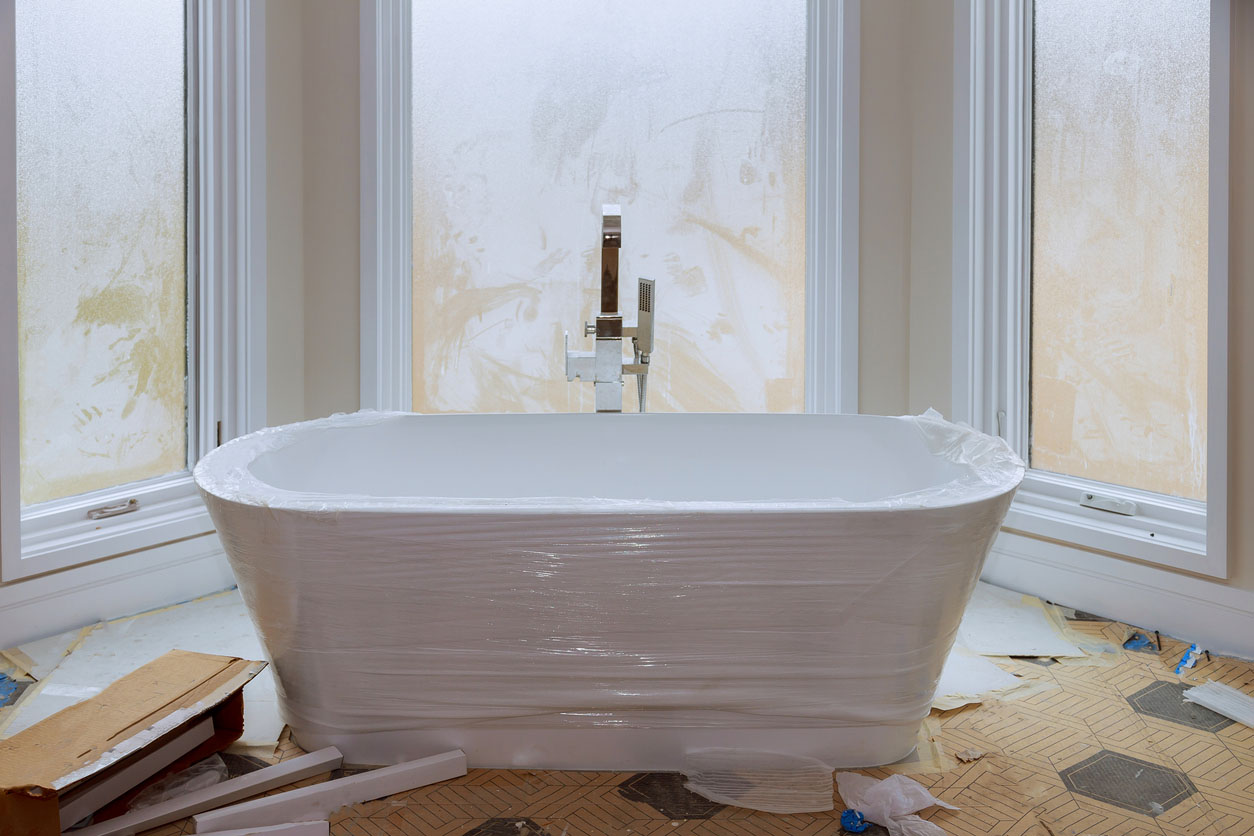
How to Save Money on Bathtub Replacement and Installation
There’s no reason you can’t have an updated bathroom with a new bathtub and still save some money. Consider the following tips before choosing the tub or hiring a contractor.
- Keep the existing bathroom’s configuration. Unless it has a significant flaw, such as needing to step over the toilet to get to the vanity, leaving the original design as is will eliminate the need to move water supply lines and drainpipes, which could save up to $1,900.
- Opt for a prefab over a custom surround. Having tile installed on the tub surround is a nice touch, but a prefab surround, which comes in panels, can run as little as $500, while the cost to tile the surround can run up to $1,000 more.
- Choose a less expensive tub. Tub cost varies widely, ranging from $600 up to $14,000. By choosing a cheaper tub, you can save money and still have a new bathtub.
Questions to Ask About Bathtub Replacement and Installation
It’s always best to have a good idea of what a remodeling project will cost before hiring a contractor. You’ve probably been told to ask for references and get more than one bid, but you’ll also want to ask a few more questions.
- Ask if the contractor will provide a bid instead of an estimate. An estimate is just a ballpark figure of what the contractor thinks the job will cost. A bid is a fixed amount the contractor agrees not to exceed.
- Ask for a line-item bid. An itemized bid breaks down all of the costs the contractor foresees. The last thing you want to do is get to the end of the project and find that a contractor has forgotten to include a vital element. If the bids are itemized, you’ll know exactly what you’re paying for.
- Ask if the total fee will be reduced if you do some of the work. While you probably shouldn’t offer to do any plumbing, framing, or electrical work, the contractor may reduce the fee a little if you remove and dispose of the old tub yourself.
FAQs
As the most prominent fixture in most bathrooms, the tub is often a focal point. If it’s old, cracked, or stained, the whole bathroom can look dingy. For those who are considering bathtub replacement, a few questions are likely.
Q. How long does it take to replace a bathtub?
It ranges from about 6 hours to 25 hours to replace a bathtub, depending on how easy (or challenging) it is to get the old tub out and the new tub in. In general, expect it to take an average of 18 hours.
Q. Is it easy to replace a bathtub on one’s own?
Replacing a bathtub isn’t usually considered an easy project because tubs can be heavy, and they are large and unwieldy. A plumber is usually necessary to make the water supply and drain connections to ensure they don’t leak.
Q. How long will my new bathtub last?
Inexpensive fiberglass bathtubs are good for 10-15 years, while jetted tubs typically last between 20 and 50 years.
Sources: HomeAdvisor, Angi, Fixr, HomeGuide, Nerdwallet

